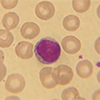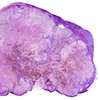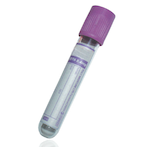Parathyroid Hormone (PTH) PTH4
Specimen Volume
1 ml whole bloodSample Preparation
Plasma must be separated and analysed within 48 hours of sample collection.
Turnaround Time
24 hoursSample Processing In Laboratory
Send immediately
Sample Stability
Plasma must be separated from cells within 48 hours of collection.
Store separated plasma at -20°C if analysis is delayed longer than 2 days
Please send separate EDTA tube if Full Blood Count Also Required
General Information
Parathyroid hormone (PTH) is formed in the parathyroid glands and secreted into the blood stream. Intact PTH consists of a single polypeptide chain containing 84 amino acids and has a molecular weight of approx. 9500 daltons. The biologically active N-terminal fragment has a half-life of only a few minutes.
Selective measurement of the (mainly) intact parathyroid hormone permits direct ascertainment of the secretory activity of the parathyroid glands. PTH, together with vitamin D and calcitonin, brings about mobilization of calcium and phosphate from the skeletal system and increases the uptake of calcium in the intestine and the excretion of phosphate via the kidneys. The constancy of the blood calcium level is ensured by the interaction of PTH and calcitonin. The secretion of PTH is inhibited by high calcium concentrations and promoted by low calcium concentrations. Parathyroid gland disorders lead to elevated or depressed blood calcium levels (hypercalcaemia or hypocalcaemia) brought about by a change in the secretion of PTH.
Detection of subfunctioning parathyroid glands (hypoparathyroidism) requires the use of a highly sensitive test in order to be able to measure PTH levels well below normal.
Hyperfunctioning of the parathyroid glands results in an increased secretion of PTH (hyperparathyroidism). Primary causes are adenomas in the parathyroid glands. In secondary hyperparathyroidism the blood calcium level is low as a result of other pathological states (e.g. vitamin D deficiency).
Notes
** **
Reference Range
2.7 – 11.1 pmol/L
(This reference range has been derived by assessment of literature and local data)
PTH should be interpreted in the context of calcium and albumin measurements. A PTH value inside reference limits in the presence of elevated corrected calcium values may indicate PTH excess.
Source of Reference Range
Abbott DiagnosticsSpecifications
- EQA Status: NEQAS
- EQAS Scheme: Yes








